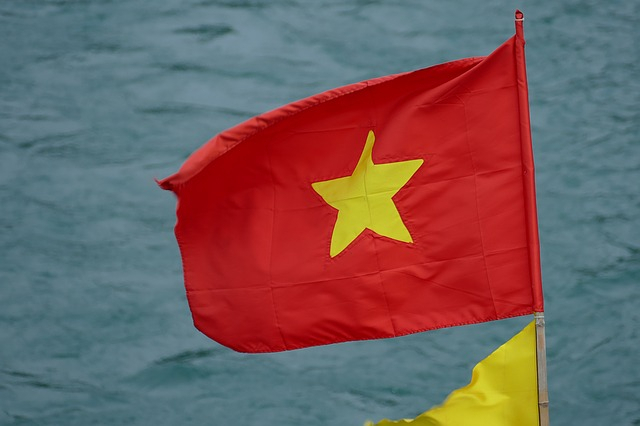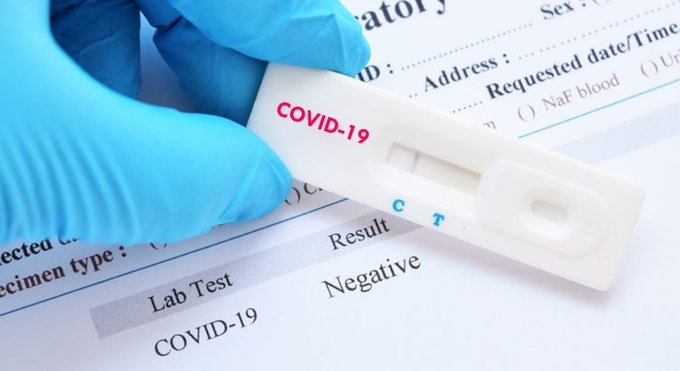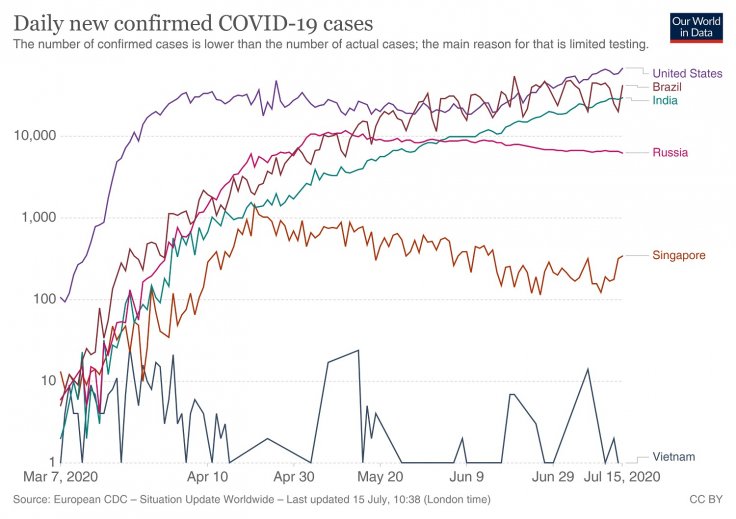A lot has been talked about Singapore, New Zealand, South Korea and even Kerala (India) model in dealing with the Coronavirus pandemic. But somehow Vietnam has gone under the radar. The Southeast Asian country reported zero new cases on July 15 — creating a model for the rest of the world to follow.
The country with close to 100 million population and not so world-class medical facilities was able to contain the outbreak better than of the western countries despite sharing its border with China, where the virus originated.
After reporting the first case in January, Vietnam has since recorded only 373 in total COVID-19 patients with the active number being 21 as of July 15. Even more fascinating factor is that it has only 4 cases per million — one of the lowest in the world and zero death so far. So, how has it managed to contain the outbreak so successfully despite being one of the economically backward countries (according to per capita GDP)?

The Vietnam Model
Since the outbreak began in January, it seemed Vietnam would face a tough challenge with a dense population and limited healthcare infrastructure and would not be able to overcome without the help of China and the U.S. But Vietnam set an example instead, with targeted containment, strategic testing, and aggressive tracing.
Strategic Testing
Vietnam, unlike other countries, was prepared to deal with such outbreak, reaping the benefits of their experience in dealing with Severe Acute Respiratory Syndrome (SARS), Middle East Respiratory Syndrome (MERS), and Avian Influenza or H5N1.
Days after China first reported their cases to the World Health Organization (WHO), Vietnam started health screening at airports on January 11 and monitoring the border areas. All passengers had their body temperature measured and anyone with fever, cough, or breathing difficulties were isolated for testing while their fellow travelers were quarantined for 14 days.
Long before other countries began to deal with the outbreak, Vietnam by January 15 held meetings with WHO and the U.S. Centers for Disease Control and Prevention (CDC) to learn how to slow the spread.

However, instead of mass testing that was followed in other countries, Vietnam made a strategic approach. Health officials only tested those who were more vulnerable and the ones who were likely to be infected. Mass testing was done in likely clusters to detect as early as possible. By March 31, the country opened 21 medical facilities across the nation for testing.
Development of Test Kits
Vietnam didn't waste time in a wait-and-see approach. Rather, they quickly acquired 200,000 test kits from South Korea and developed its own —in contrast to the suggestions that it didn't do enough testing. Using WHO-approved guidelines, the country developed rapid test kits that were not only affordable but could diagnose within an hour. By the time January came to an end, Vietnam was ready with the National Response Plan and a National Steering Committee on Epidemic Prevention.
Effective Contact Tracing and Containment
Once a person was diagnosed with COVID-19, Vietnam used its local authorities to quickly trace people who came in contact with the patient. Vietnam's Ministry of Information and Communications developed NCOVI mobile app to report health status and also opened up a web portal that could be used to report such cases.

The contact-tracing measures went up to third-tier contacts. Even people living near a confirmed case including an entire street and village were quickly quarantined to limit the spread. By June end, almost 450,000 people were quarantined in hospitals and state-run facilities for free of cost. The country even allocated 0.2 percent of its minute GDP to fight the outbreak even before it before WHO declared it as a pandemic on March 11. The country quickly went into a lockdown state with restrictions imposed on people's movement and non-essential services were closed nation-wide.
Engaging Community and Awareness Campaign
While the U.S. President Donald Trump refused to take the pandemic seriously, Vietnam's Health Ministry released a public awareness music video that went viral in the world with over 53 million views on YouTube. The message was clear: Wash hands, use sanitizers, wear masks, and check symptoms.
TikTok users made it memorable with a dance move that even forced popular British-American comedian John Oliver to showcase that on his Last Week Tonight show. Besides that, the government raised over $2.1 million from donation campaigns to fight the pandemic.
In addition, regular text messages were sent to people with details of symptoms, testing sites, and protective measures. Such was also relayed over voice message before a phone call. The government even included public organizations that worked in grass-roots to educate people. Posters were put up in offices, hospitals, residential buildings, and markets. All those combined helped the Vietnamese understand the severity of the situation and adhere to health measures and guidelines that contained the outbreak.
With those combined, Vietnam gave a lesson to the world on how to contain a pandemic even if it didn't have the means and facilities.









